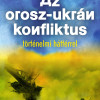Megjelent Turán Tamás: Ignaz Goldziher as a Jewish Orientalist. Traditional Learning, Critical Scholarship, and Personal Piety c. monográfiája a De Gruyter kiadónál. Bővebb információ és megrendelés a kiadó oldalán: ITT.
About this book: Ignaz Goldziher (1850-1921), one of the founders of modern Arabic and Islamic studies, was a Hungarian Jew and a Professor at the University of Budapest. A wunderkind who mastered Hebrew, Latin, Greek, Turkish, Persian, and Arabic as a teenager, his works reached international acclaim long before he was appointed professor in his native country. From his initial vision of Jewish religious modernization via the science of religion, his academic interests gradually shifted to Arabic-Islamic themes. Yet his early Jewish program remained encoded in his new scholarly pursuits. Islamic studies was a refuge for him from his grievances with the Jewish establishment; from local academic and social irritations he found comfort in his international network of colleagues. This intellectual and academic transformation is explored in the book in three dimensions – scholarship on religion, in religion (Judaism and Islam), and as religion – utilizing his diaries, correspondences and his little-known early Hungarian works.




![Ferentari incomplet politici urbane la o margine de oraș [A befejezetlen Ferentari. Várospolitika a város szélén]](https://kisebbsegkutato.tk.hu/image?src=uploads/images/Pulay_Ferentari_borito.PNG&w=100&h=100&zc=1)
